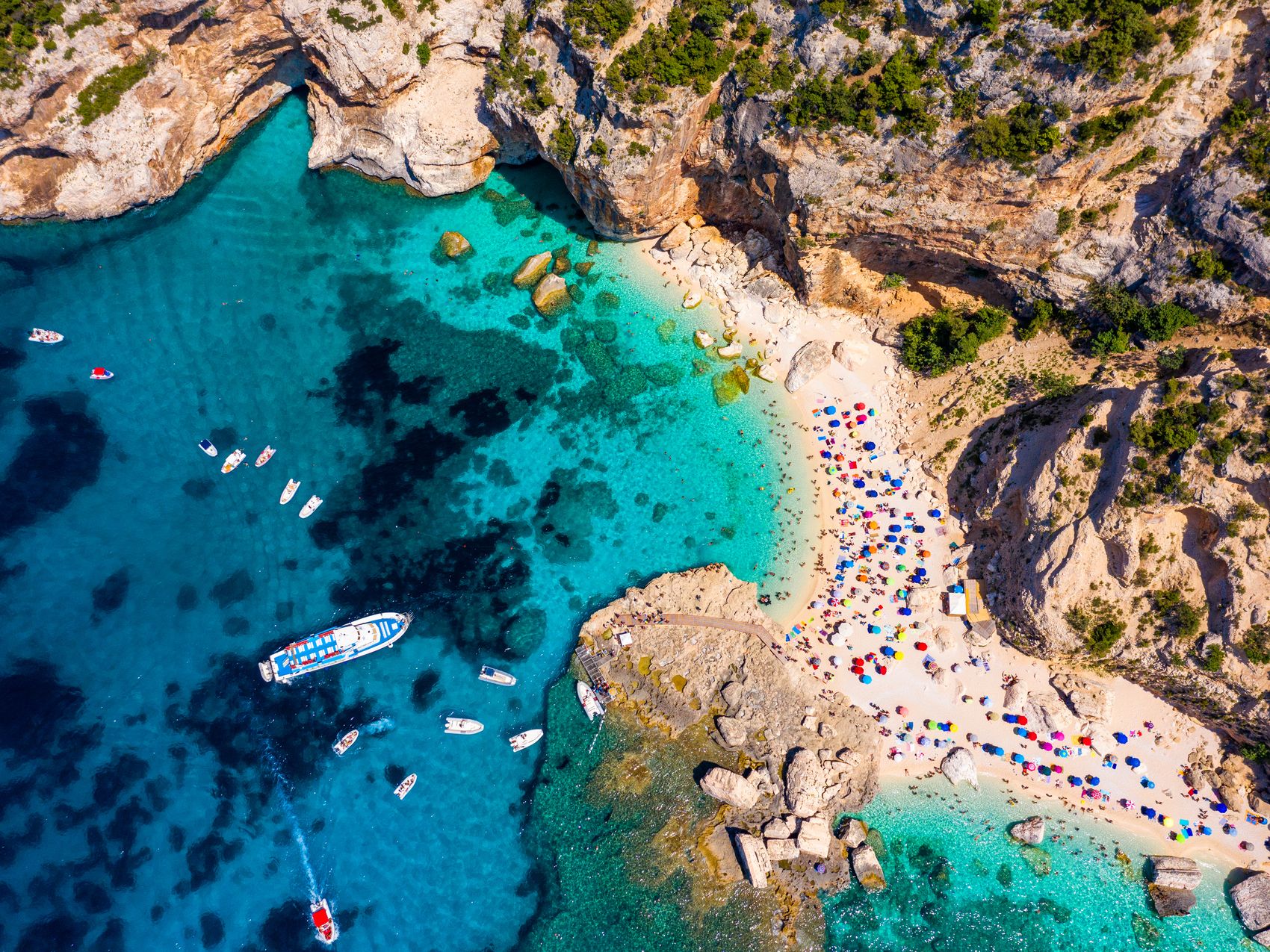The Caribbean is closer than you think. With its fifty shades of blue and turquoise water and selection of the world’s most stunning beaches covered with white sand, Sardinia is indeed the new Caribbean. The second-largest Italian island with 300 days of sunshine and top-notch marine infrastructure, it is a perfect sailing playground for active sailors who aim to get the most out of everything. You can combine your sailing adventure with wine tours, gastronomic delights, beach relaxation, historical sightseeing or with climbing. Sardinia has it all.
Sailing conditions and infrastructure in Sardinia
The best time to sail here is from late spring to autumn (May to October), with summer being the peak season (particularly August - an Italian holiday month). Summer is the best season for its optimal wind speed, from 8 to 20 knots. Generally, Sardinia boasts excellent wind conditions for active sailing, kitesurfing or windsurfing.
However, the arrival of Mistral and Tramontane winds can surprise sailors with their shocking force even in the summer. Always watch out for these winds, especially when sailing between Sardinia and Corsica (The Strait of Bonifacio). These winds don’t tend to last longer than a few days but are known for their gale events.
Mistral is a cold, northwesterly wind from southern France across the Gulf of Lions to the western Mediterranean. This type of wind implies wind gusts exceeding 50 knots and waves up to 9 meters. The mistral effects are amplified much more in the Strait of Bonifacio. Although mistral blows mainly in the winter and spring, it is stronger and more common when the air is considerably cooler than the water. Therefore, analyse the weather forecast carefully also in the summer. Typically this time of the year, the mistral builds up before dawn and hits with force in the early afternoon. Summer evenings are usually calm.
When sailing in Sardinia under the influence of Mistral wind, search for safe anchorages on the eastern side of the islands. Another type of wind - scirocco, can also occur, blowing from the south. In this wind, stay on the west side instead. In general, when it comes to navigation, always pay attention to rocks and stones.
Superb marine infrastructure means that safe harbours are located, on average, just 30 miles from each other. Just between Olbia town and south Corsica (distance of 40 nm), there are 20 marinas to choose from. In the summer months, book your berths in advance, though.
One of the most secure areas is the Porto Cervo Marina, a posh port with a large berthing capacity protected from all wind directions. It is a great place for party sailors and people admiring the most expensive yachts on the planet. Bear in mind that this is one of the most costly and luxurious marinas (and areas) in the Mediterranean, but worth experiencing.
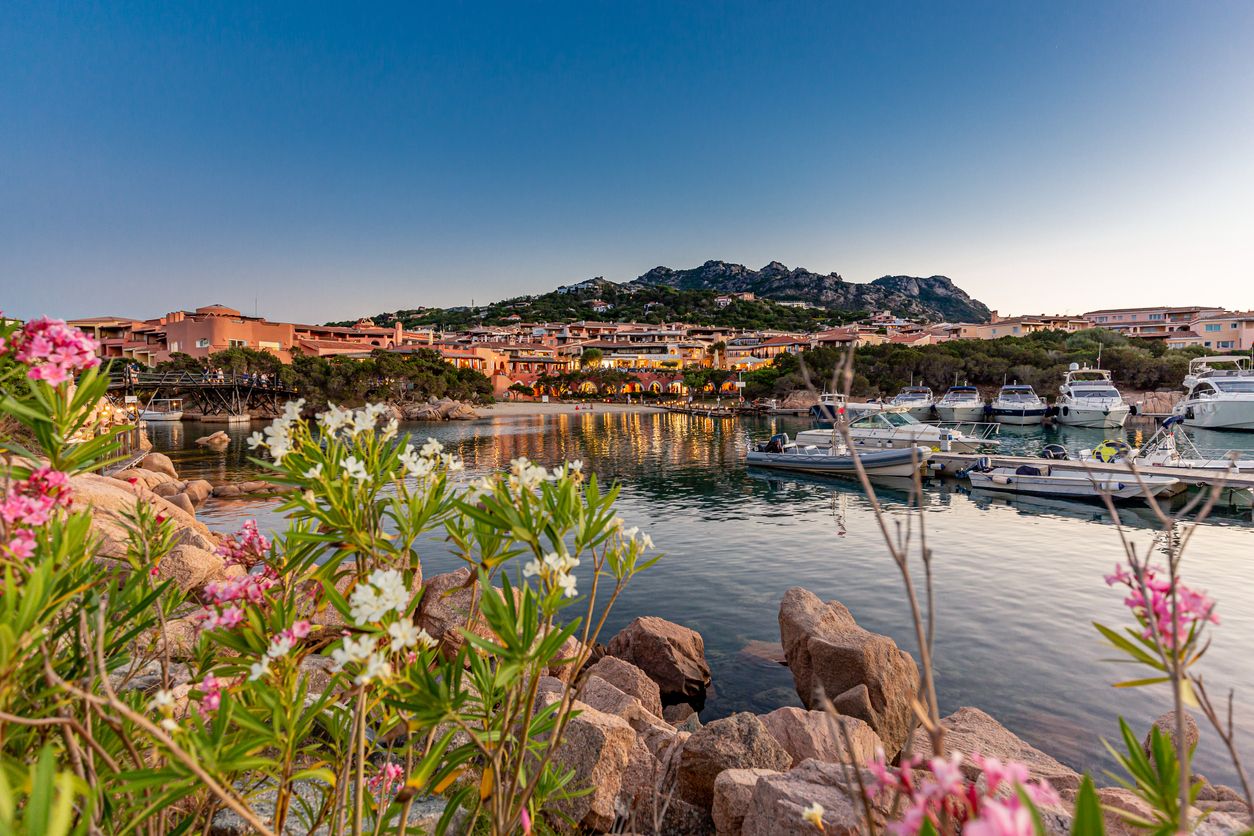
Due to its clean waters, Marina di Portisco has been certified as a Blue Flag marina. It offers good protection and amenities like power and water at every berth spot.
Marina di Porto Rotondo is another large marina and popular place because of the lovely beaches within walking distance.
The eco-friendly crew will happily experience Cala del Sardi marina, located between Portisco and Porto Rotondo. Thanks to breakwater pontoons with a Seaflex mooring system, the marina is floating, and as a result, it is very stable in extreme conditions.
Tip: take a closer look at your skipper license. In Italy, you are eligible to sail only with a license issued in Italy or in the country where you hold citizenship. With a combination of, f.e.“RYA papers/Croatian papers and German/Czech citizenship etc.”, you can encounter difficulties.
Mastering the Waves of Sardinia: A Comprehensive Guide to Sailing the Enchanting Italian Isle
By circumnavigating Sardinia, you would add around 500 miles to the logbook. It’s unlikely that you’ll sail that much in a week. Since Sardinia’s diversity is so alluring, we would advise you to make more sailing trips here.
The North, Northeast and the South of Sardinia are the ultimate favourite sailing locations. The rugged northern shoreline and its numerous islets, islands, rocks and shoals pose a nice challenge when you are keen on the navigational part of sailing. The South is windy yet more secluded. The western part is a bit tricky due to its exposure to NW winds, but it still has a lot to offer, although with a smaller amount of safe anchorages with sufficient depth. When in the West, visit Neptune’s cave in Alghero’s summer resort and take pictures of Capo Caccia’s cliffs.
Sailing in the north-east of Sardinia
The Northeastern route is trendy (not only) because of the glamorous look of the Smeralda Coastline. Exclusive hotels, luxurious superyachts and haute cuisine restaurants are omnipresent. Apart from the “VIP” vibes, the Smeralda Coastline is dotted with picturebook beaches that are lapped by a sea of emerald colour. Sailors are lured by its breathtaking and diverse shoreline with hidden coves, sandy beaches and cliffs in the background. Relatively steady winds add to the popularity to this area.
The best starting points to set sails to the main attractions in northeastern and northern Sardinia are Porto Rotondo and Portisco, nicknamed the most charming marina in Sardinia. You will have practical access to Olbia town, majestic Tavolara island and magnificent La Maddalena islands from this location. La Maddalena archipelago is the highlight of your northern Sardinia adventure. This national park hides some of the world’s best beaches.
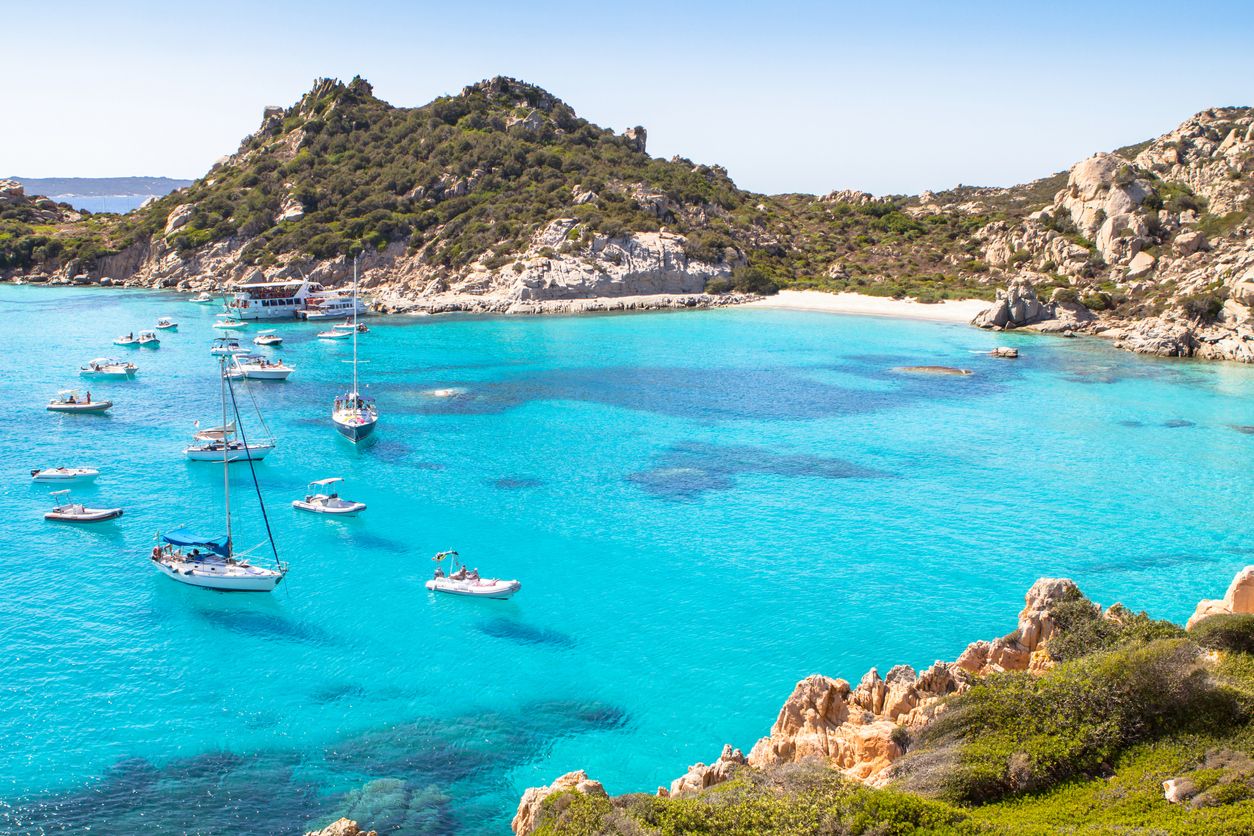
When sailing along the northern coastline of Sardinia, the gorgeous port Bonifacio in southern Corsica is an irresistible attraction and must-see. The arrival to the town situated on the cliff is a memorable experience for your whole life. Sailing to Bonifacio is only recommended for experienced sailors (and crews) who understand nature’s force! The Strait’s narrowest point can be pretty challenging, with mistral blowing at 25 knots even in the summer. Except for usual weather forecast apps, call the weather station on the lighthouse of Capo Pertusato, located very close to Bonifacio, to receive an accurate and updated weather report. During the sailing to Bonifacio, watch out for rocks.
Sailing in the south of Sardinia
The sailing traffic in the North is busier than the one in the South. Sailing in the South is the best alternative for relaxation, protected bays, kids-friendly beaches and exceptional sceneries.
History and folklore aficionados will be amazed by the old town of Cagliari and the charming town of Teulada. Visit the island of San Pietro with the lovely medieval town Carloforte will be a worthy stopover appreciated mainly by tuna lovers. Hobby archaeologists will be delighted to observe the Nora remains close to Pula town. If you also fancy a non-sailing adventure and inland mystery, travel 60 km from Cagliari to the middle of Sardinia to see ancient stone buildings from the Bronze Age. The mysterious Nuragic complex of Barunimi (UNESCO World Heritage Site) will leave you wondering about the unsolved function of these prehistoric buildings.
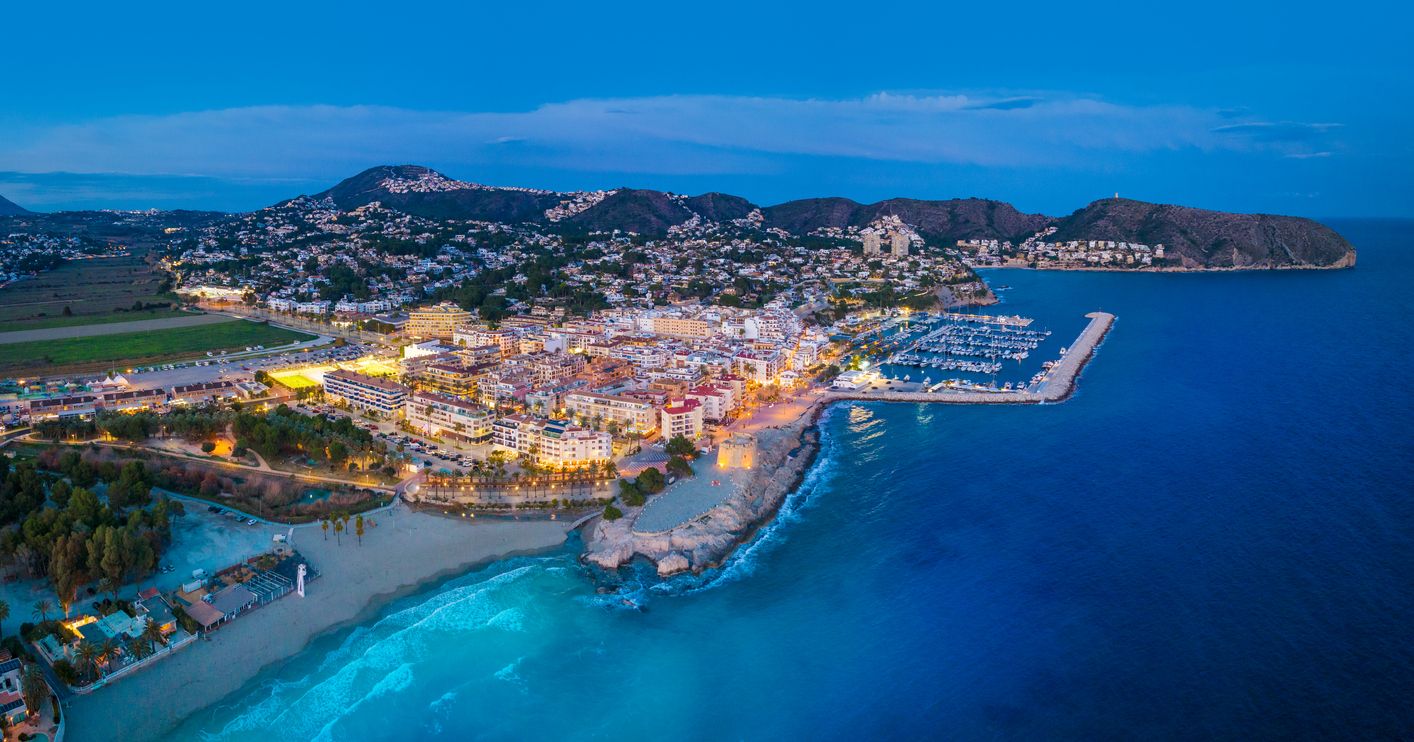
Since Sardinia is well-known for its wonderful beaches, make sure to spend enough time in the area of Chia to soak up the true Caribbean atmosphere. You will experience snorkelling, swimming and diving like nowhere else in Europe. Find shelter in popular anchorages such as Cala Malfatano, Porto Pino, Calasetta or Tuerredda. Add Capo Carbonara to your southern sailing route if you are addicted to snorkelling and diving.
Sardinia is not only about sailing
Wherever you opt to set sails for, you will be satisfied. This sunkissed island has stunning beaches at every bay; plenty is accessible only by boat. Apart from sailing and swimming, rent a jet ski or practice kite surfing.
Porto Pollo is a famous beach spot in the north, close to Palau town. The highlight in the northeast are beaches on the little peninsula Capo Testa. In the east, set foot on one of the beaches on the 30 km long shoreline Golfo di Orisei. Cala Luna, Cala Mariolu or Cala Fuili are best accessible by water. When near Olbia, stop by the Porto Istana group of sandy beaches surrounded by an emerald sea. In the south, swim in the crystal clear sea at the Porto Giunco beach close to Villasimius town. Once there, prepare your cameras for pink flamingos living in Notteri Pond.
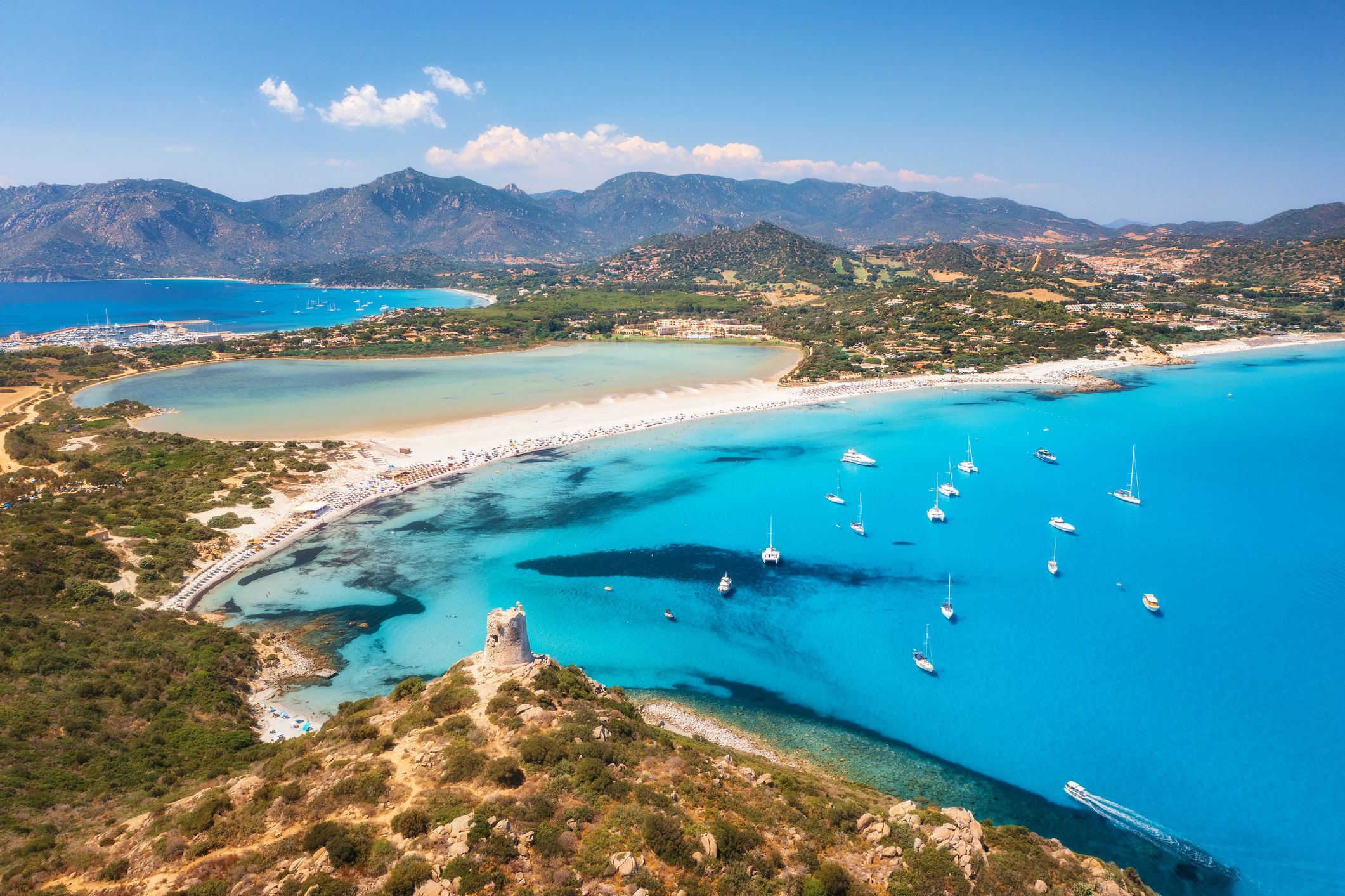
Make sure to savour the culinary side of Sardinia. Taste specialities such as dry cheese pecorino, local bread carasau, slow-roasted pig porcheddu and seafood (don’t leave Sardinia without tasting “aragosta alla catalana”). Sardinia’s cuisine is indeed captivating.
Rocks, mountains and hills make up 80% of the surface of Sardinia. Mountains are formed by granite and limestone rocks, making Sardinia one of the best, yet still rather underrated, destinations for rock climbing, bouldering and hiking in the Mediterranean. Experience a panoramic trek Selvaggio Blu stretching for 40 km along the seaside, try bouldering on wildly shaped rocks created by strong winds in the Lavezzi island or take your rock-climbing gear to Punta Giradilli cliff and Cala Gonone - the real climbing hub.
Suggested 7-day sailing itinerary in the North of Sardinia
To get the most out of Sardinia, we outlined an itinerary in the north and northeast part of the island. Have a look at the route marked on Google Maps on this link.
- Day 1 (Saturday): Check-in at Portisco marina or Porto Rotondo (0 nm)
- Day 2 (Sunday): Portisco - Little Tahiti - Tavolara island (25 - 30 nm)
- Day 3 (Monday): Tavolara - Pevero beach - Cannigione (25 - 30 nm)
- Day 4 (Tuesday): Cannigione - Caprera (15 nm)
- Day 5 (Wednesday): Caprera - Budelli/Santa Maria (10 nm)
- Day 6 (Thursday): Budelli - Santa Teresa Gallura - or to La Maddalena (10 - 20 nm)
- Day 7 (Friday): Santa Teresa Gallura - La Maddalena - Portisco (20 - 30 nm)
Day 1 - Portisco
Start in Portisco or Porto Rotondo, visit Tavolara island, and gradually head towards the north to La Maddalena archipelago along the eastern coastline.
After check-in, get to know your boat and explore the area before tomorrow’s departure to the sea.
From Portisco marina, walk to the sandy beach Spiaggia di Portisco. You can enjoy refreshing cocktails and delicious snacks at the small local beach bar Koki. For a large pizza and steaks, go to the trendy restaurant Matt’s, visited mainly by sailors from the marina.
If you booked your boat from a marina in Porto Rotondo, this place is infused with plenty of options for swimming and dining. Our not-so-secret-any-more tips are secluded beaches Spiaggia di Shirley Bassey and Spiaggia Hruska, where it is advisable to get there on foot (and with good shoes). Have a walk in the picturesque village and spoil yourselves with a superb dinner at Deste - an exceptional restaurant serving Sardinian dishes. A bit pricey but well worth it.
Day 2 - Portisco - Cala Brandinchi - Molara island - Tavolara island (25 nm)
Before heading north, sail south along the Gulf of Olbia for around 15 nautical miles to an impressive island Tavolara. This island is a natural geological wonder visible from a distance with its 5 km length and 0.5 km height.
Interestingly, Tavolara is referred to by locals as “the smallest kingdom of the world”. The locals are part of the old family Bartoleoni and are the only inhabitants of this royal island. The supposed kingdom was declared in the 19th century, and the tradition continues.
On your way to the remarkable Tavolara, have some stopovers on numerous beautiful beaches. If you are in the mood for beach hunting, add Little Tahiti to your route. That’s what the Cala Brandinchi is called because of its resemblance with this idyllic paradise. Less touristy is a similar beach nearby - Spiaggia delle vacche.
The small island Molara has its charm as well, Piscine di Molara feels indeed like anchoring in a swimming pool. This little island’s great advantage is the spectacular Tavolara view.
Where to stay?
On Tavolara, spend the night in Spalmatore Bay. There are two restaurants (Da Tonino and La Corona) on the island, and both are run by the current “rulers” of the Tavolara micronation. We do not recommend anchoring for a night on Molara island when NW, W and S winds blow.
Day 3 - Tavolara - Pevero Beach - Cannigione (27 - 30 nm)
Let’s still indulge in the beach mood. One of the must-see beaches is Principe Beach (Spiaggia del Principe, situated close to Romazzino village), named after Prince Aga Khan, a “godfather” of the Costa Smeralda. Afterwards, sail north and have a stopover at Pevero Beach. On this day, you will fall in love with a turquoise colour as this is the colour of Pevero waters. For those who like to experience a bustling place full of luxury, celebrities and expensive vessels, Porto Cervo will be a welcoming change in the itinerary.
Your today's final destination is a small fishing town, Cannigione, featuring long and sandy beach stretches dotted with diving spots. Cannigione is Sardinia's snorkelling hub with easy access to the best beaches on Costa Smeralda.
Where to stay?
You can anchor in Pevero for the night or continue sailing towards Cannigione. There are several marinas and anchorages in this area to choose from, e.g. marina in the town, buoys in the bays of Cannigione and a sandy seabed in Laconia to hold your anchor. A cosy atmosphere and menu with great cakes and plenty of vegan options await you in the Caffé Del Sole.
Day 4 - Cannigione - Caprera Island (15 nm)
About 10-15 nautical miles north of Cannigione or 20 nm from Tavolara lies the pretty island Caprera, the second largest of the La Maddalena archipelago, connected to the main island with a bridge. When entering the La Maddalena archipelago national park, purchase your tickets online or at a marina before arrival to avoid paying almost double the fee.
Caprera is a natural reserve because of protected species such as royal seagulls, cormorants and falcons. A lovely spot to get to know Caprera is the beach Spiaggia di Cala Coticcio.
Caprera offers more than beaches. This is an island where nature rules. Hiking is the best way to feel the island’s magic. The trail Poggio Zonza and Poggio Stefano leads you to the island's heart. It is common to come across wild goats and pigs on these trails. You can climb the peak of Monte Tejalone to see the entire archipelago in front of you. One of the fathers of modern Italy, Giuseppe Garibaldi, enjoyed his retirement retreat on this island, and you can still visit his house.
Where to stay?
Caprera has several anchorages scattered over its surface. Just be aware that August is the trickiest month for finding a not overcrowded spot to anchor. On the east side, moor to a buoy in the Cala Coticcio. On the west, drop an anchor in Cala Garibaldi, Cala Caprarese or the southwest, in Baia di Stagnali. In the south, a well-protected place is Porto Palma Caprera. Although dining options are limited, try the sandwich bar I Mille Bar Paninoteca, and you will be positively surprised.
Day 5 - Caprera island - Budelli or Maddalena island (10 nm)
During these days, you will be meandering a little bit around the La Maddalena islands. From the Caprera island, sail to other La Maddalena siblings - Budelli, Razolli, Santa Maria or Maddalena.
Budelli is considered one of the most breathtaking islands in the entire Mediterranean. A visit to Sardinia would be incomplete without seeing a pink beach with your own eyes. The world-famous beach, “Spiaggia Rosa,” with pink sand mixed with shells and corals, is an iconic place to visit. Again, this beach is better accessible by boat.
Santa Maria island may have fewer attractions, but the natural swimming pool Cala Marras is indeed a fairytale bay.
Unsurprisingly, the biggest island La Maddalena is also famous for its fabulous beaches and granite terrain. On top of that, you can stumble upon several ancient ruins.
Where to stay?
On Budelli island, Spiaggia del Cavaliere is a splendid anchorage for the night. In the morning, you can take the SUP to Santa Maria island for a visit.
An anchorage with buoys - Cala Giorgio Marino (also called Porto della Madonna) is situated in the middle of three Maddalena islands, Budelli, Santa Maria and Razzoli and is well-protected from all sites. You will find a few mooring buoys on the island Razolli in a safe and magical anchorage Cala Lunga.
If you decide to stay overnight at La Maddalena island, sail to the little port of Spalmatore on this island. The bay consists of three sandy beaches surrounded by rocks. A cheaper and friendlier option is to spend your night at the port of Cala Gavetta in the south. Be aware that sand is protected in Sardinia, so don’t steal sand or shells from beaches if you don’t want to be caught.
If you intend to have a fulfilling dinner today, you must postpone this plan for the next day. There are no restaurants except for those in La Maddalena town. Osteria La Tana Del Panada could be more appealing from the outside, but you will get one of the best seafood on La Maddalena island for a reasonable price. It would be a sin to be in Italy and not to get their incredible “gelato”. Ice cream place La Finestrella owned by three ladies will take you to heaven; just be patient waiting in line.
Day 6 - Budelli - Santa Teresa Gallura (10 nm) or to La Maddalena
There are a couple more spots to see in the La Maddalena archipelago. Sail around and make some unplanned visits. About 2 hours west of La Maddalena in the northern Sardinia lies the town of Santa Teresa Gallura. This is an ideal place to see Sardinia’s foreign sister Corsica clearly from the Torre Spagnola (a tower above the city).
Where to stay
The harbour in Santa Teresa Gallura is a suitable place to resupply the amenities and enjoy a slow dinner. It is a usual starting point for the trip to Bonifacio. The only drawback of the marina is the distance to the centre. A new PeMa Ristorante offers incredible combinations of food made of quality ingredients, and the customer service is incomparable.
Marina in Palau town or anchorages in the area such as Porto Liscia are other excellent alternatives to stay for the night in the north of Sardinia.
Day 7 - Santa Teresa or La Maddalena - Portisco (25 - 30 nm)
If you only had a little time to explore the La Maddalena national park to the fullest, you will still have a chance to remedy that on your way back to your home marina, stop by the uninhabited island of Spargi and other places on your to-see list. Swim, snorkel and observe the transparent waters in the Spargi bays, from Cala Corsara and Cala Petranera to Cala Grano. In the evening, return to your base marina in Portisco and start planning your next trip to the South of Sardinia.
There’s a local saying: “Why would you go to the Caribbean when you can go to Sardinia!” Feel the Carribean vibes on your skin (and sails) wherever you are in Sardinia. This little big island has a lot to offer.
